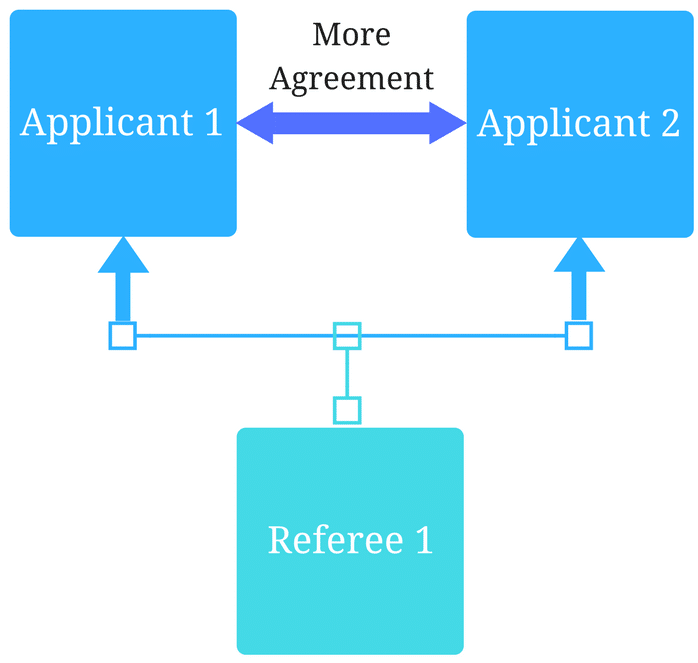The Path to Precision: Reducing Errors and Enhancing Outcomes with MSPE Automation

October 5, 2023
MSPE letters play a critical role in medical education progression. In yesterday’s Holistic Success Show we dove into MSPE challenges, best practices, and methods to streamline the process to benefit both educational programs and students.
Sylvia Mioduszewska, Senior Product Manager for One45 at Acuity Insights shared her deep insight on the importance of reviewing, automating, and constantly reviewing your schools’ MSPE process with Senior Director, Marketing Anju Visen-Singh.
Read on to discover some of the questions Anju posed to Sylvia on how automation is changing the game for MSPE creation and student success.
What is MSPE?
The MSPE, or Medical School Performance Evaluation, previously known as the Dean’s Letter, is a detailed assessment of a medical student’s performance throughout their education. In Canada, it’s termed the MSPR (Medical School Performance Record), with similar content and structure, just a different acronym. Some institutions refer to it as ‘mis-pee’. Generated annually by medical schools, this report is vital for students’ residency applications upon finishing undergraduate medical education. It offers an in-depth view of a student’s academic, clinical, and personal accomplishments, including evaluations from clerkships. While it once included exam scores, this trend is diminishing. In essence, the MSPE is a comprehensive academic report card.
What are some lessons learned from working with many different schools throughout their MSPE process?
Over the past three years of working with schools, I’ve discovered a significant variability in the content and processes used to create the MSPE document. While the AAMC offers a MSPE template, it’s quite broad, allowing for interpretation. Contrary to what some might believe, schools don’t always strictly adhere to this template. The main requirement is that the MSPE doesn’t exceed seven pages, which leads to varied additional content from one institution to another. The process behind the creation of this document also varies. Some schools have dedicated teams, with as many as a dozen members, while others operate with just a single individual. This range in personnel, from administrators to deans, usually falls under the office of student affairs, leading to various practices and timelines based on the different people involved.
What are some of the best efficiencies that can be drawn into the process?
Automation and standardization are vital for schools to efficiently create the MSPE. Using software to gather grades and other evaluation data can drastically cut down on time and effort. It’s essential to have a centralized system, like the MSPE Builder, to aggregate data from various sources, reducing errors and streamlining processes. Two main aspects of standardization are crucial:
- Data collection from clerkships, which involves having a consistent template for faculty evaluations and feedback. While there are guidelines for grade releases, there’s variability in data collection procedures. Additionally, having a process for finding remediated grades and revised narratives is essential.
- Cross-school standardization, to aid programs in reviewing applications. With some programs assessing thousands of applications for limited spots, a standardized MSPE format becomes critical for efficiency and comparability.
Why is timing and preparation so important during MSPE season?
Schools benefit from starting their MSPE processes early. Tools like the MSPE Builder can help schools begin as early as October. Starting early allows for gradual task completion instead of a rush during the summer months. This also ensures adequate time for other crucial administrative or faculty tasks throughout the year.
Building in time for quality assurance checks is also essential. For example, some schools involve volunteers to read the MSPE for inconsistencies or errors. Given the multiple reviews, an external perspective helps catch overlooked mistakes. Furthermore, allowing students to review their MSPE is a valuable final step. As the primary stakeholders, students can pinpoint discrepancies or omissions, ensuring a polished final document.
In addition, proper training of faculty and clerkship directors is crucial. They must provide constructive feedback for students in their evaluations, especially since comments for the MSPE can’t be modified. Inadequate comments can affect student outcomes negatively. Clerkship directors, faculty, and administrators also need understanding and training on the significance of their feedback and the importance of timely submission, considering the downstream effects on the MSPE.
How can schools improve their process for MSPE letter creation?
Effective change management is pivotal to understanding what’s needed in the MSPE process and why.
It’s critical to know where your data originates, who owns it, and who needs to be informed for regular updates and accuracy. Tools like the MSPE Builder prioritize pulling data from updated source systems to ensure consistency. Ensuring that records like transcripts match with the MSPE is essential. Recognizing where your data is housed and how it’s retrieved is crucial for a robust data collection process.
It’s also important to engage students in data collection as collecting unique data from students enhances the MSPE. This includes the noteworthy characteristic section, which lets students highlight their distinctive achievements, involvement, and research projects, as well as confirming data that is otherwise hard to find. Various methods are used to gather this data, like survey software or platforms like One45. These surveys can also be instrumental in verifying details like pronouns, name spellings, or potential gaps in academic history.
Speaking of students, how has automating the MSPE process helped to improve their outcomes?
Automating the MSPE process can lead to various benefits that directly or indirectly improve student outcomes. One significant advantage is the streamlining of the MSPE creation process. This automation frees up valuable time for faculty, deans, and administrators, allowing them to dedicate more attention to individual students who might require additional support, mentoring, or guidance, and ensuring their letters accurately reflect their abilities. Such targeted attention can have a profound positive impact on those students’ outcomes.
Furthermore, the automated approach significantly reduces the risk of human error, such as transcription mistakes or omissions. By ensuring an accurate representation of a student’s achievements and challenges, residency programs receive a clear and comprehensive picture of the student, enabling them to make better-informed decisions during their selection process.
An additional benefit is the uniformity in how data is presented for all students, achieved through automated systems. Such consistent reporting ensures that each student is portrayed in a standardized manner, leveling the playing field and guaranteeing that no student is at a disadvantage due to inconsistencies in their MSPE.
Beyond the hard data, automation allows faculty and administrators to focus on the subtleties of a student’s journey. They can emphasize aspects like interpersonal skills, resilience, or growth trajectory, elements that are crucial for a successful residency.
To listen to the full episode on streamlining your MSPE process, visit our YouTube channel.
Related Articles

How interviews could be misleading your admissions...
Most schools consider the interview an important portion of their admissions process, hence a considerable…
Reference letters in academic admissions: useful o...
Because of the lack of innovation, there are often few opportunities to examine current legacy…
